Slip Slidin’ Away: Veins & Faults in Virginia Soapstone
by Jerry Hu ’21
Earlier this academic year, my friend Gabe Mojica ’21 wrote about his research on soapstone bodies near Schuyler, Virginia. Gabe’s not the only member of the William & Mary Structural Geology & Tectonics Research Group studying soapstone as my thesis research is focused on veins and faults that cut the soapstone.
Polycor, a Canadian, American and French company, quarries dimension stone for architectural and high-end design uses. As of 2021, Polycor is the sole provider of American soapstone and that soapstone is quarried at the Old Dominion site in central Virginia. Here large (think mini-van sized) rectangular blocks are cut from the bedrock. These massive blocks are then slabbed and polished for use in beautiful kitchens and bathrooms.
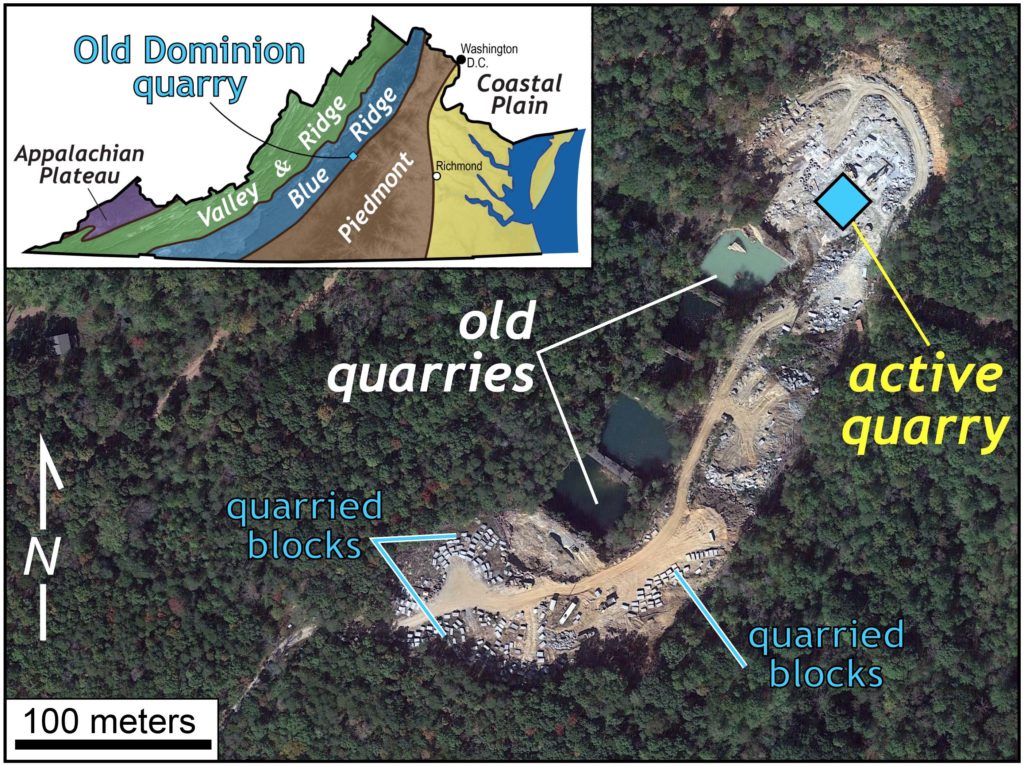
Google Earth imagery of the Old Dominion quarry site from 2017. Note the old quarries which were active in the early- to mid-20th century and the current Polycor operation. There are numerous large quarried blocks in storage at the site.
Soapstone obtained from the Old Dominion quarry is an attractive stone that’s generally massive and quite homogeneous with a soothing bluish-gray color. The aesthetic value of the soapstone is enhanced by veins in the rock which provide texture and a visual pop. I want to understand the origin of these veins and decipher just when they formed. The minerals and the microstructures in the veins yield information about the physical conditions and tectonics during its formation. Understanding the vein networks may also help Polycor with their operation as they’d like to market visually distinctive soapstone to consumers.
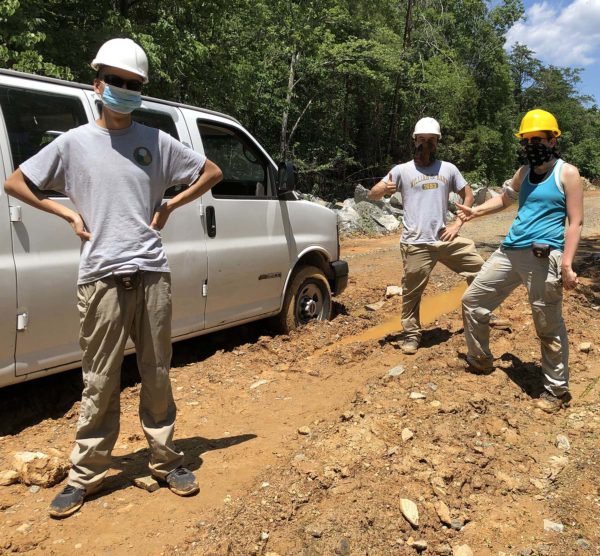
Stuck in the mud while conducting summer fieldwork. From left to right- me, Gabe Mojica ’21 and Terri Zach ’21.
COVID-19 made even getting to the field challenging, but we completed two, safe and successful, trips during the summer of 2020 to the Old Dominion quarry to make field observations and collect samples.
Here we observed a set of mineralized veins associated with faults that preserve well-developed slickensides. For a structural geologist, a slickensided fault surface is a thing of beauty because the kinematics of fault movement or slip can be worked out from these structures.
As the fault slips and slides, fluids precipitate minerals along the fault surface – and as these mineral fibers (known as slickenlines) grow they track the direction of movement across the fault. Exposures at the Old Dominion quarry are superb, and we examined faults in detail, measuring the orientation of the surface and the associated slickenlines.
The mineralized fault surfaces indicate that the hanging wall moved downward relative to the footwall. These are normal faults, and this came as a surprise as we’d originally predicted that these faults would be reverse faults formed during the Neoacadian orogeny (~350 million years ago). Our original hypothesis was framed off data from previous regional studies, and these new results demonstrate the value of detailed studies.
We now postulate that these normal faults formed long after Paleozoic regional metamorphism and are related to Mesozoic rifting, an episode of extensional deformation that ultimately created the Atlantic Ocean basin (~200 million years ago).
Back at William & Mary, I examined the rock under a petrographic microscope and conducted X-ray diffraction analysis to identify the mineral assemblage in the rock and the veins. The texture of the mineralized fault surface is distinctly different than that of the massive soapstone and we confirmed the slip direction at the microscopic scale.
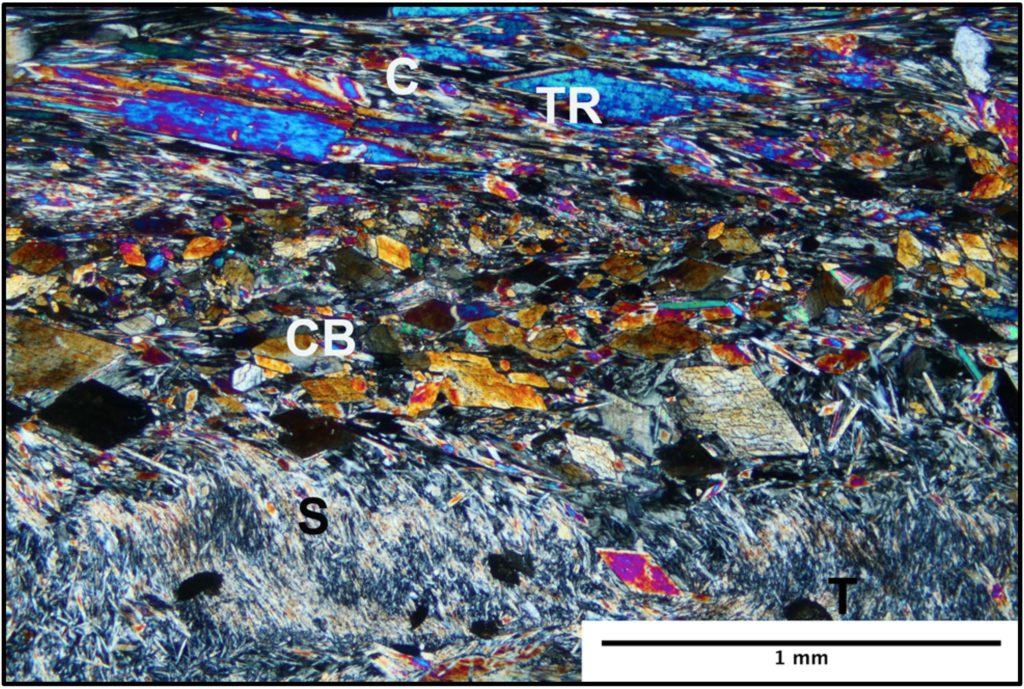
Micrograph of soapstone (bottom of image) and fault vein (top of image) in cross polarized light. C- recrystallized carbonate, CB-brecciated carbonate, S- serpentine, T- tremolite.
Minerals in fault veins include carbonate (calcite and dolomite), Mg-rich tremolite, and pyrite. The pyrite is distinctive, as it grew into large (2-3 cm) flake-like striated grains (rather than into its traditional cubic habit) along the fault plane. In Virginia’s humid climate, pyrite (FeS2) exposed at the Earth’s surface weathers to rusty brown hydrated Fe-oxides in short order.
In 1933, Harry Hammond Hess published the first detailed study of these curious rocks near Schuyler and recognized that the soapstone formed by hydrothermal metamorphism of ultramafic rocks which required a significant addition of H2O- and CO2-rich fluids to the rock system. Hess went on to become a prominent petrologist and he first outlined a viable mechanism for seafloor spreading in the early 1960s, thus helping to launch geology into the plate tectonics age.
Our study demonstrates that long after the hydrothermal metamorphism, which created the soapstone, fluids were once again critical to mobilizing elements and reprecipitating minerals in a set of previously unrecognized faults.
English physicist Sir Isaac Newton said in 1675: “If I have seen further it is by standing on the shoulders of giants.” This is applicable to almost any physical and biological science research. Without Harry Hess and other geologists before me, I would not have been able to reach any of the conclusions in this research. It is always important to look back—as we can’t make any progress in geology, or any science if we aren’t standing on the shoulders of giants.

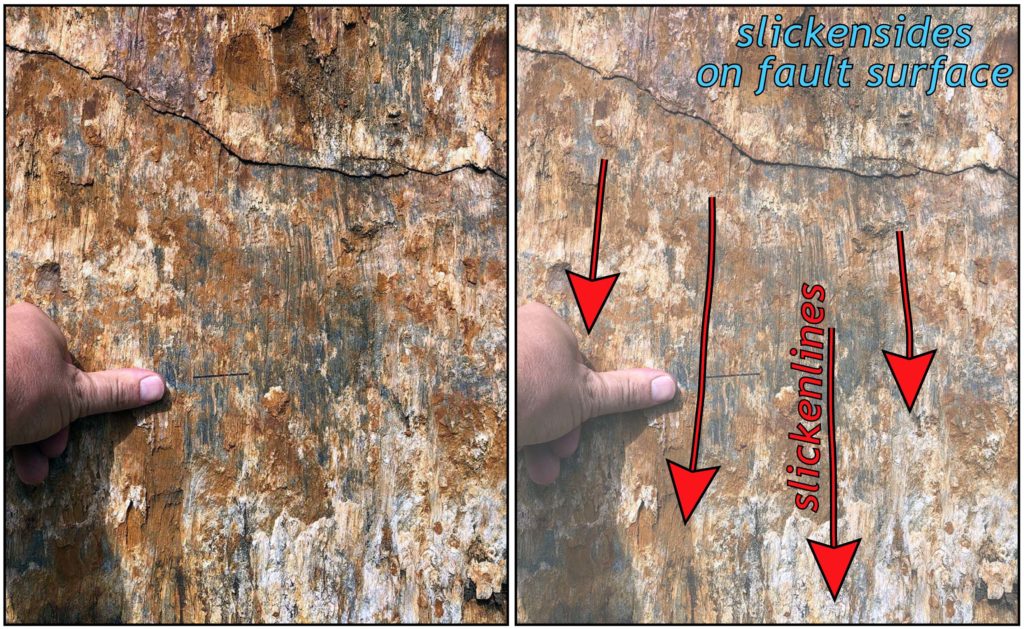
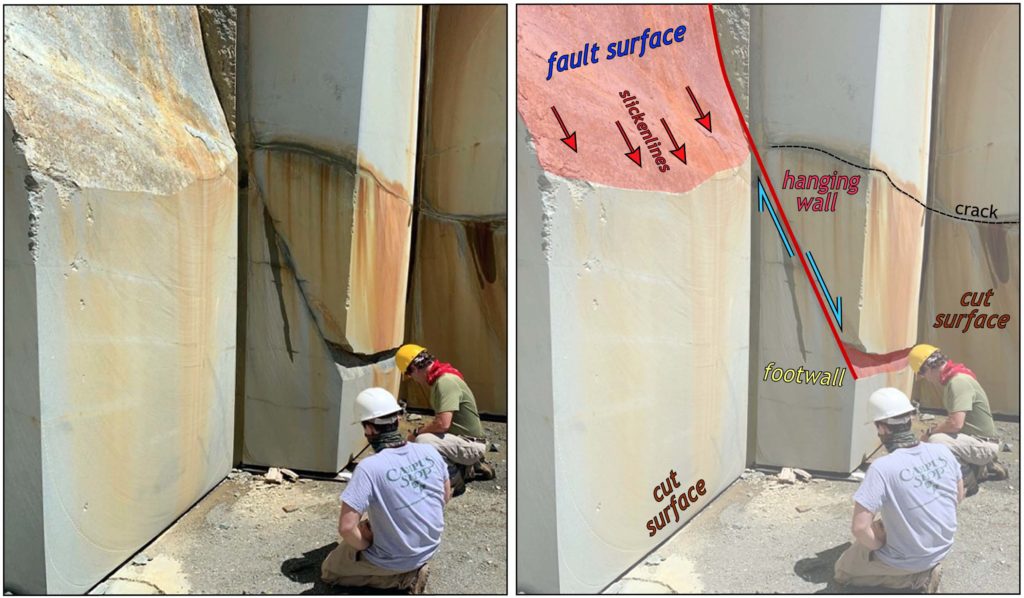
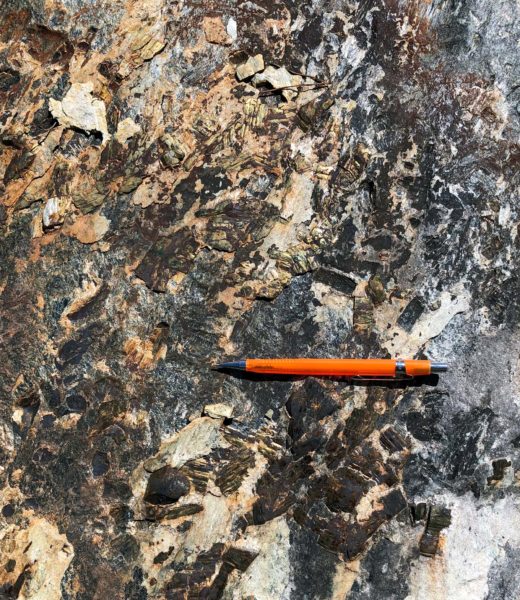
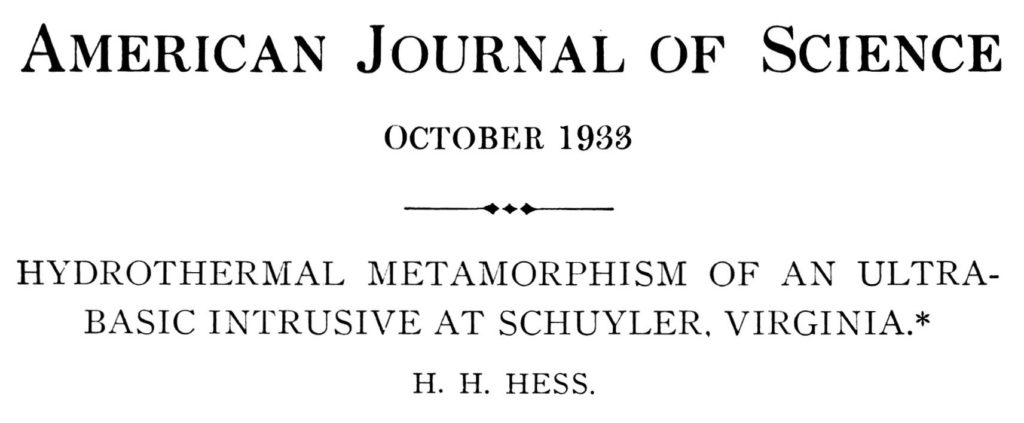



No comments.
Comments are currently closed. Comments are closed on all posts older than one year, and for those in our archive.